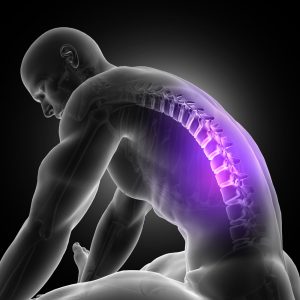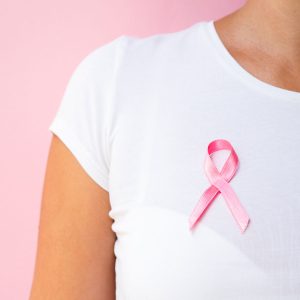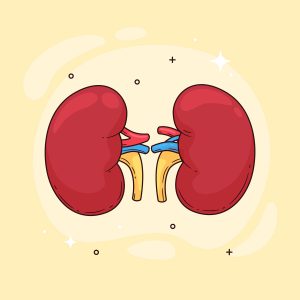“Every breath … Every move … Every life matters”
Early screening … Early diagnosis … Early treatment initiation is all that makes a difference.
EPIDEMOLOGY:
- Breast cancer is the most common malignant tumor in women in the world.
- Breast cancer patients account for as much as 36% of oncological patients.
- Almost half of the cases on a global scale are in developed countries.
- Despite the greater effectiveness of initial diagnostics or the rapid development of pharmacotherapy in recent years, breast cancer is the first cause of death from malignant tumors in women in the world and in India.
RISK FACTORS:
HORMONE AND REPRODUCTIVE:
- Early age of the first menstruation
- Late age of the last menstruation
- The first reported pregnancy at a late age (after 30 years of age)
- No pregnancies
- Postmenopausal condition
- Use of oral contraception
- Use of hormone replacement therapy
RELATED TO PHYSIOLOGICAL FACTORS AND HEALTH STATUS:
- Older age (increased risk from 35 years of age)
- Family history of breast cancer
- Breast, ovarian and endometrial cancer in the past
- Occurrence of benign changes in the breasts,
- Presence of atypical hyperplasia
- Ionizing radiation, used for Hodgkin lymphoma therapy
- Rapid growth in adolescence and high growth in adulthood
- Infection with an oncogenic virus (e.g., Epstein–Barr)
NUTRITIONAL:
- Western type diet
- Excessive consumption of fats, especially animal fats
- High consumption of red and fried meat
- High iron intake
- Development of overweight/obesity after menopause
- Low consumption of fresh vegetables and fruits
- Low intake of phytoestrogens (isoflavones, lignans)
OTHER LIFESTYLE-RELATED:
- Regular moderate/high alcohol consumption
- Lack of regular physical activity
AGE:
- Age is one of the most important risk factors for breast cancer.
- The global increase in the incidence of breast cancer is observed in all age groups and is highest in women under 50 years of age.
Furthermore, the incidence of breast cancer in premenopausal women is increasing—within 30 years it has increased almost 2-fold.
REPRODUCTIVE AND HORMONAL RISK FACTORS IN BREAST CANCER PATIENTS:
- Estrogens play an important role in the pathogenesis of the development of breast cancer.
- Breast cancer is considered a hormone-dependent tumor in which elevated estrogen levels and longer exposure to this hormone are associated with an increased risk of its development.
- In all postmenopausal women, high serum estrogen levels are associated with an increased risk of breast cancer.
- Both hormonal factors and reproductive factors are indisputably influencing the increase in the risk of breast cancer.
- The duration of exposure to estrogen and the effect of pregnancy determined by parameters such as:
- Age of the first menstrual bleeding, the age of the first pregnancy (especially exposure in women who gave birth to the first child after the age of 30), childlessness, or the age of onset of menopause change the individual risk of breast cancer. menopause changes the individual risk of breast cancer.
- Early onset of menstruation (12 years) and late termination (50 years) increases the risk twice compared to women who started menstruation late (15 years) and ended it early(40 years).
- Also, childlessness and the late age of the first pregnancy (over 30 years of age) are factors associated with prolonged exposure to estrogens.
- Nulliparous women and those who became pregnant for the first time after the age of 30 have an increased risk of getting sick 2–5 times more.
GENETIC FACTORS, FAMILY OCCURRENCE:
- Only a small group of breast cancer cases (5–10%) are genetic.
- The best-known genetic mutations associated with this cancer include mutations in the BRCA1 and BRCA2 genes.
- Other suppressor genes whose high-penetration mutations predispose to breast cancer are the TP53 (Li-Fraumeni syndrome) and PTEN (Cowden syndrome) genes.
- The cumulative risk of developing breast cancer at age 70 for women with Li-Fraumeni syndrome is 54%.
- In patients with Cowden’s syndrome, the risk of developing breast cancer throughout life is in the range of 25–50%. However, both genetic syndromes are very rare.
- Mutations in the ATM, BRIP1, CHEK2 and PALB2 genes show a moderate predisposition to breast cancer.
OTHER RISK FACTORS:
- Ionising radiation
- Mild breast changes (pre malignant lesions)
- Alcohol consumption
- Diet
- Obesity
- Nicotinism
BIOLOGICAL TYPES OF BREAST CANCER:
5 molecular subtypes of breast cancer, such as: luminal A, luminal B, HER-2 positive non-
”luminal”, basal-like and special histological types.
BREAST CANCER TREATMENT:
SURGERY:
The basic types of surgical procedures used in women treated for breast cancer are:
- Tumor excision;
- Mastectomy;
- Excision of the sentinel lymph node;
- Excision of the armpit lymphatic system.
- Currently, breast conserving therapy (BCT), which is a method used in early forms of cancer, is becoming more and more widely used, and is characterized by the same effectiveness.
- Surgical treatment of breast cancer can take the form of sparing treatment consisting of:
- Removal of the tumor along with the margin of healthy tissues;
- Quadrantectomy; surgery within the axillary fossa (all lymph nodes of the axillary fossa—axillary lymphadenectomy or sentinel lymph node).
- Breast cancer treatment is multidisciplinary; it includes approaches to locoregional therapy (surgery and radiation therapy) and systemic therapy.
- Systemic therapies include hormone therapy for hormone-positive disease, chemotherapy, anti-HER2 therapy for HER2-positive disease, and immunotherapy.
- The addition of immunotherapy for the aggressive subtype TNBC has revolutionarized treatment in breast cancer and help in controlling the disease.
- Latest novel treatment options like ADCS and Radio immunotherapy are a ray of hope for future.
Dr. Mounika Reddy C
MBBS, MD (Radiation Oncology), DM (Medical Oncology)
Consultant – Medical Oncologist














